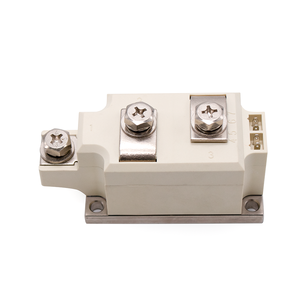Thyristors Online | High-Quality Power Semiconductors
“Beyond the Binary: A Multifaceted Exploration into the Materials Science Behind Modern Electronics”
(Semiconductor Composition of Thyristors: Unveiling the Material Science Behind Modern Electronics)
The semiconductor composition of thyristors is a crucial component of modern electronics. While it may seem like a straightforward concept, there is much more to this material than meets the eye. In this blog, we will delve into the fascinating world of semiconductor composition and uncover the material science behind these versatile devices.
Thyristors are an essential part of modern electronic circuits, used for controlling the flow of electricity and switching between different states of a circuit. They are commonly found in power supplies, voltage-controlled switches, and other electronic components. But how do they work? The answer lies in the unique properties of the materials used in their construction.
One of the most important properties of semiconductor materials is their ability to conduct electricity. This property allows thyristors to store energy in the form of electrical charge, which can then be released to control the flow of current. Additionally, semiconductor materials have a high thermal conductivity, which means that they can transfer heat easily to surrounding surfaces.
Another important aspect of semiconductor composition is their electron concentration. High electron concentration creates a negative ion concentration in the semiconductor material, which is responsible for the basic operation of thyristors. When an electric current flows through the semiconductor, it generates a positive charge on one side of the conductor and a negative charge on the other side. This positive and negative charge are attracted by each other due to the large difference in electron concentration, creating a voltage difference that can be controlled by the amount of current flowing through the device.
The properties of semiconductor materials also play a crucial role in determining the performance of thyristors. For example, the choice of substrate material can affect the surface roughness and impurities present in the semiconductor material, which can impact the electrical properties and reliability of the device. Similarly, the concentration of impurities in the semiconductor material can impact its physical properties and reduce the overall efficiency of the device.
Despite their many benefits, thyristors are not without challenges. One major challenge is the dependence on precise temperature control. In order to operate thyristors properly, they must be cooled down below their Curie temperature, which is a critical temperature at which their electron concentration changes significantly. If the temperature is not maintained properly, the device can fail to function correctly or even die out completely.
Another challenge is the possibility of defects in the semiconductor material, such as unintentional inclusion or substitution of certain elements. These defects can impact the electrical properties and reliability of the device, leading to reduced performance and failure rates.
Despite these challenges, the material science behind thyristors remains an active area of research, with ongoing efforts to improve the performance and reliability of these devices. Advances in nanotechnology and new processing techniques are helping to overcome some of the challenges facing thyristors, while still allowing them to maintain their key properties and functions.
(Semiconductor Composition of Thyristors: Unveiling the Material Science Behind Modern Electronics)
In conclusion, the semiconductor composition of thyristors plays a crucial role in their functionality and performance in modern electronics. By understanding the fundamental properties of these materials and their interactions with the electric field, we can develop improved designs and technologies that allow us to harness the full potential of thyristors in a wide range of applications. Whether you’re working on developing new electronics devices or simply curious about the underlying principles of these complex systems, exploring the material science behind thyristors is an exciting and rewarding journey.


